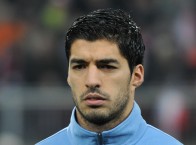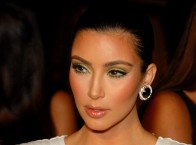Carrie Lam, the 4th and current Chief Executive of Hong Kong, is known for her reputation as a "Tough fighter." Here are some very interesting facts about the first female Chief Executive of the nation:
- Lam has served the public for more than 36 years in 20 public service position including Director of Social Welfare, Permanent Secretary for Housing, Planning and Lands, Hong Kong Economic and Trade office, Home Affairs and administration. She was awarded the Gold Bauhinia Star and the Grand Bauhinia Medal in 2010 and 2016.
- She was born Cheng Yuet-ngor on May 13, 1957, to Lam Fung-lan and Cheng Aa-mo of Zhoyshan ancestry. She was the fourth of five children to her parents.
- Lam was elected as the Fifth-Term Chief Executive of the Hong Kong Special Administrative Region on March 26, 2017 and was officially appointed to this position by the Central People’s Government on March 31, 2017 to assume office on July 01, 2017.
- She had her formal education at St. Francis Canossian School and College, a Catholic girl’s institution. After graduation Lam attended the University of Hong Kong majoring in sociology in 1980.
- She was her school head prefect and in her 13 years of schooling only once she did not top her class for which she wept. Her flat was so small that she had to do her homework sitting on bed.
- As a student, Lam was an activist and campaigned for the government’s handling of Yau Ma Tei boatpeople who were facing a difficult situation. She was active in the student union during her University days, where she switched her course of study from social work to sociology to help her understand society.
- In 1980 after completing her graduation she joined the Administrative service and served in various departments covering medicals and health, district administration and security and worked on two special assignments relating to Hong Kong’s electoral arrangements and securities market.
- Lam grew-up in a lower-class family in Wan Chai, however she earned a reputation as a fighter after throwing herself on to the front line of various controversies. She faced off against conservationists during the 2007 demolition of the historic Queen’s Pier and during the 2014 pro-democracy Occupy movement.
- In 1982, the colonial government sponsored her further studies at the University of Cambridge in United Kingdom, where she attended one-year Diploma Course in Development studies. While at U.K. she met mathematician Lam Siu-por and two years later she became Carrie Lam.
- In the 1990s she spent almost seven years in the Finance Bureau, involved in budgetary planning expenditure control and the government’s capital works program. Initially she was appointed as Principal Assistant Secretary and later as Deputy Secretary for the Treasury.
- In August 2000, she was appointed as the Director of Social Welfare, managing a HK$30 billion welfare portfolio. She tightened the Comprehensive Social Security Assistance scheme for the disadvantaged following high unemployment and severe fiscal deficits.
- During the outbreak of SARS epidemic in early 2003, Lam along with senior civil servants in their personal capacity, set up the ‘We Care Education Fund,’ raising over HK$80 million to meet the long term education needs of children whose parents have died of SARS.
- In November 2003, she took over as Permanent Secretary for Housing, Planning and Lands, and the position of Chairman of the Town Planning Board. A year later she was appointed Director General of the Hong Kong Economic and Trade Office in London, overseeing Hong Kong’s trade and economic interest in the U.K. and 16 Central and Eastern European Countries.
- On her return from United Kingdom on March 08, 2006, she was appointed as Permanent Secretary for Home Affairs. As part of sports portfolio, she took part in Hong Kong’s preparation for co-hosting the 2008 Beijing Olympics and Paralympics Equestrian Events, She was also responsible for cultural policy and helped mapped out plans for the West Kowloon Cultural District.
- On being appointed Secretary for Development on July 01, 2007, she resigned from civil service. As the principal official in her five year tenure, she initiated diversified, balanced and sustainable development.
- She oversaw the demolition of the landmark Edinburgh Place Ferry Pier for the Star Ferry and Queen’s Pier to make way for land reclamation, which triggered occupation protests by the conservationists. Her handling of the pier conflict earned her a reputation as a ‘tough fighter’ by then Chief Secretary for Administration, Rafael Hui.
- In 2010, she put forward her new Urban Renewal policy to lower the threshold for compulsory sale for redevelopment from 90% to 80%. The human rights organization criticized her policies for benefitting the big real estate developer and marginalizing small owners.
- In 2012, Lam led the Development Bureau in cracking down unauthorized buildings works in the indigenous villages of the New Territories and also tried to tackle the ‘Small House Policy,’ which has been subject to abuse amidst a land crunch. She was criticized by ‘Heung Yee Kuk’ of robbing villagers of their fundamental rights.
- In recognition of her achievement as Secretary for Development, she was awarded honorary member of the Hong Kong Institute of Landscape Architects, Hong Kong Institute of Architects, Royal Institution of Chartered Surveyors, honorary fellow of the Hong Kong Institution of Engineers, Property Person of the Year in the RICS Hong Kong Property Award 2012.
- On July 01, 2012, she was appointed the Chief Secretary for Administration under Chief Executive Leung Chun-ying. In the first month, she faced the Moral and National Education controversy. Her popularity as the leader of a committee advising on national education, dipped by two percentage points from 64 to 62.
- In October 2013, she became the head of the Task Force on Constitutional Development to bring about a constitutional reform in the electoral methods for the 2017 Chief Executive election. After the pro-democracy suffragists launched a large-scale occupation protests, the proposal were defeated in the Legislative Council in June 2015 and Lam lost her long held title as one of the most popular government official.
- Lam sparked controversy when she was the only principal official not to offer an apology for the lead-in-water scandal. She also stirred another controversy when she in her speech cited the eight Beatitudes, saying ‘Some said that the eighth blessing applies very well to me,’ and that there is a place already reserved for me in heaven. This angered Reverend Thomas Law Kowk-Fai and a senior lecturer at the Chinese University of Hong Kong, who felt she was arrogant.
- In December 2016, she was under fire when she announced a deal with Beijing for a Hong Kong Palace Museum, without any public consultation and was also criticized for appointing Rocco YimSen-kee behind closed door to start HK$4.5 million feasibility study months before the authority board chose the architect.
- On January 12, 2017, she formally announced her decision to enter the 2017 Chief Executive election with an eight point achievable new vision. The election rally with the campaign slogan of ‘We Connect, We Care, We Listen, We Act,’ was attended by many pro-Beijing figures. She had the support of Politburo of the Communist Party.
- On March 26, 2017, Lam was elected Chief Executive with 777 votes, 197 more than she got in the nomination period. She was the first female leader and first candidate to be elect without leading in the polls. As the first leader from University of Hong Kong alumni, she was sworn in on July 01, 2017, and pledged to ‘heal the social divide’ and ‘unite our society to move forward.’
- In July 2017 when she proposed co-location arrangement of the Guangzhou-Shenzhen-Hong Kong Express Rail Link, sit parked concern that it might undermine Hong Kong’s autonomy of ‘One Country, Two Systems.’ After long debate the cross-border Express Rail Link was opened on September 22, 2018.
- In March 2018, when the controversial National Anthem Bill was proposed to preserve the dignity of the ‘March of the Volunteers’ raised concern over freedom of expression, Lam dismissed it for it targeted people who deliberately insulted the national anthem. The bill was gazetted on January 11, 2019.
- In January 2019, Lam faced opposition from both pro-Beijing and pro-democracy legislators for the proposed age threshold for elderly Comprehensive Social Security Assistance would jump from 60 to 65. The government was also under fire for the inconvenient application process for a cash handout of up to HK$ 4, 000 to people who neither own property nor get welfare benefit.
- She has two sons, Jeremy and Joshua, who were educated in England. Her husband Lam Siu-por used to teach at the Chinese University of Hong Kong and her elder son Jeremy joined Xiamoi, electronic and Software Company in Beijing in April 2016. Both her husband and sons are British citizens.
- In recognition of her career achievements and contributions to the community, she was conferred an honorary degree of Doctor of Social Sciences by Lingam University and Officer de la Legion d’ Honneur by the French Government in 2013 and 2015 respectively.
- Carrie Lam Net Worth: $2 Million

 Share on Facebook
Share on Facebook





















